Recruiting Trends
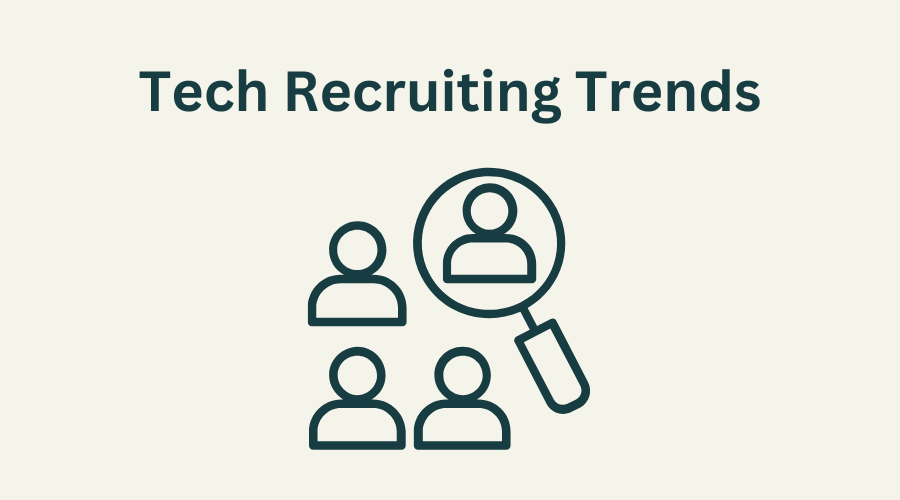
Recruiting Trends
Tech Recruiting Trends
Recruiting technical professionals has taken a bit of a hit recently with all the layoffs happening. I think I’ve seen numbers like 200,0000 of them have been let go in the last year or so. But this doesn’t necessarily mean its going to be easier to recruit them. Tech job site Dice.com recently published a report on what these tech pros seek in a future employer. Here’s a quick summary of that research; More technology professionals are likely to change employers. Despite a less optimistic outlook on the economy, 52% of respondents indicated they are likely to switch jobs in the next year (up from 44% last year). This is great news for companies hiring tech talent where supply continues to outpace demand and concerning news for any organization currently employing tech professionals. The need for tech talent shows no signs of slowing and this increase in openness to opportunity means recruiters are more likely to get a response from both active and passive candidates. Fully remote work remains important to most technology professionals, surpassing interest in a hybrid working model. Sixty percent of tech professionals ranked 100% remote work as their most desired workplace setting compared to 53% in 2021. Understanding why they now prefer working remotely full time and what, if anything, would entice them to return to the office a few days a week will help employers navigate remote work policies and return-to-office initiatives in the new working world. An employer’s brand and company culture are driving factors in technology professionals’ decision to join a new employer. Nearly 90% of tech professionals feel an employer’s brand is important when considering a new employer and nearly 8 in 10 said they would not apply for a higher paying job at a company with a bad reputation. If you’re not investing in your brand and reputation as an employer and ensuring your company culture is one that supports employee morale and creativity, you’re already behind. Employers plan on employees returning to the office in the near future, but their return-to-office incentives don’t align with what technology professionals want most. Almost 70% of employers have future plans for a hybrid work environment, but only 30% of tech professionals indicated a preference for hybrid work. To entice employees to return to the office at least three days a week, employers are offering incentives like free food, casual dress codes and comfortable furniture. For tech professionals, however, increased pay, or other monetary incentives are most likely to attract them back to an office environment. But the allure of fully remote will always be there. Tech Recruiting Evolution The tech recruiting landscape is constantly evolving, and tech companies need to stay up-to-date in order to keep their businesses competitive. One of the bigger tech recruiting trends that has recently emerged is an increased focus on candidate experience. Companies are putting more effort into providing a positive hiring process for tech candidates, seeking to create a respectful and welcoming environment in which they can evaluate potential job applicants. Another tech recruiting trend that has been gaining traction is the use of AI technology in hiring processes. Utilizing AI allows tech companies to assess candidates quickly and accurately, while also streamlining the recruitment process. AI can be used to analyze resumes, gauge aptitude tests, and even conduct virtual interviews, helping tech companies find the right fit for their tech team. Finally, tech recruiters are also increasingly leveraging data-driven tech recruiting strategies. By using data analytics to identify and target the most qualified tech talent, tech companies can improve their hiring process while ensuring they make the best hires for their tech teams. Leveraging data-driven recruitment methods helps tech companies attract the right tech professionals more quickly and efficiently. Overall, tech recruiting trends show that tech companies need to stay ahead of the curve in order to remain competitive. To do this, they must embrace new technologies and strategies such as AI and data-driven recruiting in order to ensure a successful tech team recruitment process. By doing so, tech companies can find the ideal fit for their team faster than ever before. It’s likely many tech companies over hired during the pandemic and now they have begun to realize they don’t need all these people to remain profitable. This era may also be the end of entitlements pioneered by the likes of Google to entice workers to remain at work for long hours. A global pandemic and remote work have caused a sea change in recruiting and a new era of talent acquisition is upon us.
Continue reading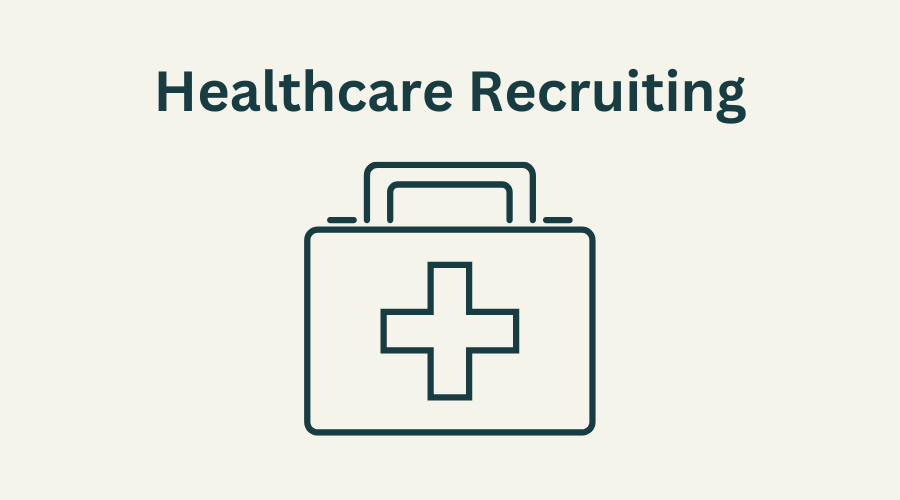
Recruiting Trends
Future of Healthcare Recruiting
The healthcare industry is growing rapidly, and healthcare recruiting is becoming more complex and challenging due to our population getting older and living longer. In order to stay ahead of the competition, healthcare recruiters need to be prepared for the challenges that 2023 and beyond will bring. Here are the top 6 healthcare recruiting challenges that I see coming up: 1. Talent Acquisition: In 2022, healthcare organizations will be challenged to find the right talent for their organization. With healthcare jobs becoming increasingly specialized and competitive, healthcare recruiters will need to develop effective strategies for sourcing top-tier candidates. 2. Cost Control: The healthcare industry has seen a steady increase in healthcare costs over the past few years, and healthcare organizations are increasingly looking for ways to reduce costs without compromising quality of care. Recruiters will need to be creative in finding cost-effective recruitment solutions that still bring in the best healthcare professionals. 3. Employee Retention: Healthcare recruiters will also face the challenge of keeping healthcare talent engaged and committed to their healthcare organizations. Retaining healthcare professionals is key to success in the healthcare industry, and recruiting strategies should focus on creating an engaging environment for healthcare employees that encourages loyalty and retention. 4. Recruiting Automation: More healthcare organizations are utilizing recruitment automation technology to streamline their recruitment processes. This will present a challenge for healthcare recruiters who are not familiar with the technology, and they will need to quickly become knowledgeable in order to keep up with their healthcare competitors. 5. Adaptability: As healthcare technology advances, healthcare recruiters will need to be able to quickly adapt recruitment strategies to include changes in healthcare technologies and processes. 6. Compliance: Healthcare organizations must comply with relevant healthcare regulations and laws when recruiting healthcare professionals. Recruiters must be aware of healthcare compliance regulations and ensure that recruitment activities are conducted in a compliant manner. To follow up on these thoughts, The Josh Bersin Company, a research and advisory company focused on HR and workforce strategies, recently published some practical advice for healthcare organizations looking to address the sector’s alarming and fast-growing clinical workforce gaps. According to Bersin’s research, the healthcare industry is the largest employer in the U.S., with 1 in 7 Americans working in the sector today. The vast clinical capacity gap (there will be a gap of 2.1m nurses, or 1 in 3 nurse roles, by 2025, according to recent Bersin Company research) is the biggest challenge faced by the sector both in the U.S. and globally. The new report specifies what healthcare organizations should do now, based on this innovative, groundbreaking data—from benchmarking current workforce skills, and identifying roles in decline, using AI to identify skills and roles adjacencies, to determining career pathways to help bridge the capabilities now needed. The report also provides targeted development and educational programs to support people into the key roles of tomorrow. How to Fix Healthcare Recruiting Here’s a summary of solutions to address the healthcare recruiting challenge. Career pathways can even help raise communities from poverty to higher levels, solve societal challenges, and create equity and sustainability Reskilling people from a whole range of other roles, whether inside or outside healthcare, is now one of the most impactful strategies to fill severe gaps in nursing, potentially addressing 1/3 or 700,000 of unfilled vacancies in the health economy Healthcare employers need to be more vocal about no-cost retraining opportunities. Although 61% offer tuition reimbursement, only 11% see this widely used by employees and just 8% say employees are aware of these programs Educational assistance programs—those that don’t require employees to pay out of pocket—allow economically disenfranchised workers to participate and access genuine opportunity via these programs Employees in declining roles like receptionists or environmental services workers have many of the skills needed to easily reskill to entry level clinical roles Career pathways programs also significantly reduce the turnover of clinical talent—one of the biggest issues in healthcare (with some providers seeing rates of up to 60%). Gale Healthcare Solutions released new survey data today showing that gig-style work options offering flexible schedules and quick pay to workers can address the national nursing shortage and retain sought after nursing staff. The vast majority of clinicians – 89% – said they strongly prefer getting paid daily or sooner versus waiting for weekly or biweekly pay schedules. This finding held true across all age groups, not just younger workers. “Healthcare has 2-3 times as many job titles, skills, and career clusters as other industries, but traditional recruitment and retention solutions alone aren’t effective enough to close the clinical capacity gap. Career pathways from dead-end administrative roles to future-proof clinical jobs are one of the most strategic solutions to fill the clinical shortage over time. However, employers will need to develop long-term strategies to build their pipelines, as the certification requirements and learning/reskilling timelines are very long for clinical roles. As a result, healthcare organizations must think and act outside of the box, and they must start today if they want to survive beyond tomorrow. What’s interesting is that leaders in any industry can learn from these innovations to future-proof their organizations.” -Kathi Enderes, SVP, Research, and Lead Healthcare Industry Analyst at The Josh Bersin Company The healthcare industry is becoming increasingly complex, and healthcare recruiters need to stay ahead of the curve in order to remain successful. By understanding the top healthcare recruiting challenges of the future, healthcare employers can (and need to) prepare themselves for the changing landscape. These challenges can be solved, but only with a fresh perspective and the leadership to make it happen.
Continue reading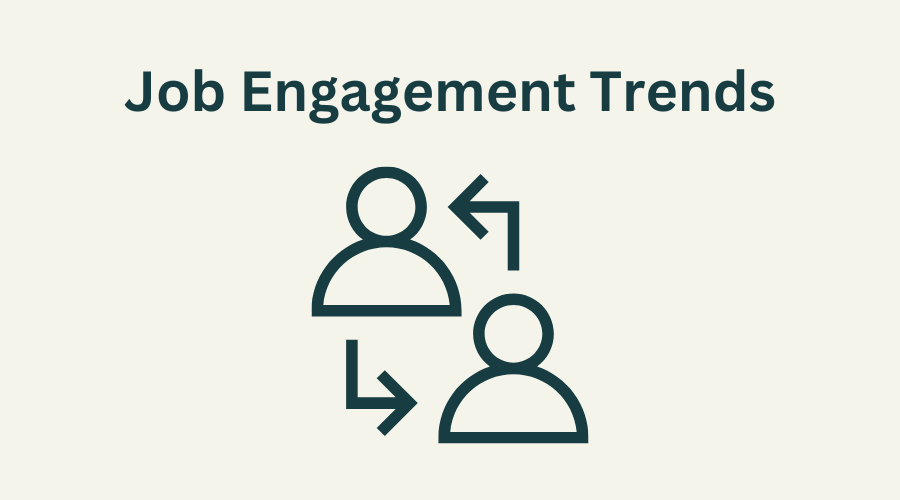
Recruiting Trends
Job Engagement Trends
A new survey reveals that nearly a third of workers report decreased engagement with the connection that they feel to their work. This isn’t a new trend but it foretells ominous signs for talent retention in the coming years. Remote working is not the only culprit. The Conference Board survey said recently that work location—whether on-site, remote, or a hybrid blend of the two—has no impact on self-reported engagement levels. But some people do feel decreased engagement more than others: Women, Millennials, and individual contributors report lower engagement than men, older generations, and executives. The survey also finds that even though more workers want to quit, few have actual plans to do so. Perhaps the perception (real or imagined) of a recession next year has them thinking twice about quitting. This might be a temporary respite for employers that have been steadily losing the balance of power to candidates. Additionally, having a caring, empathetic leader increased in importance to hybrid workers (56 percent) and remote workers (50 percent) more than those in the physical workplace (44 percent), perhaps a reminder to leaders to be more intentional and inclusive for those who are remote at least some of the time. Leadership has to step up! The latest workforce survey from The Conference Board polled office workers last month. Respondents weighed in on workplace culture, work location, compensation, and benefits. Here’s what they said; Many employees are less committed, but they’re working hard anyway. How do you feel now about your engagement and level of effort compared to how you felt 6 months ago? 30 percent say their level of engagement at work—the commitment and connection that employees feel to their work—is lower than six months ago. Lower engagement isn’t necessarily affecting effort: Only 18 percent say their level of effort has decreased in the last six months. 50 percent say it’s the same; 31 percent say it’s increased. More women, Millennials, and individual contributors report lower engagement and effort than their counterparts. Engagement levels decreased for all workers regardless of work location/schedule. How do you feel now about your engagement compared to how you felt 6 months ago? Engagement decreased for 30 percent of fully remote workers, 31 percent of workers with a hybrid work location, and 30 percent for fully in-office workers. More workers want to quit… How do you feel now about your intent to stay compared to how you felt 6 months ago? 37 percent say their intent to stay has decreased in the last six months. More women and individual contributors say their intent to stay has decreased than their counterparts. Decreases in intent to stay were similar among generations. …but few have firm plans to leave any time soon. Have you voluntarily left your organization for another job since the pandemic began? Only 12 percent are actively planning to leave in the next six months. A looming recession has some workers thinking twice before quitting. Given the economic slowdown, are you more or less likely to leave your current organization in the next six months? 29 percent say the economic slowdown makes them less likely to leave their job. “While these results show that a likely recession may slow some of the high turnover we’ve been seeing, engagement is eroding for many of those who remain,” said Rebecca Ray, PhD, Executive Vice President of Human Capital at The Conference Board. “For businesses to truly thrive, they should focus on improving employee engagement, no matter the employee’s work location or schedule. Especially during challenging times, previous research from The Conference Board has shown that it is important for leaders to reconnect all workers to the mission and purpose of the organization, as well as to lead with compassion. For workers who are remote or hybrid, this may mean being more intentional about making time for connection.” A majority of workers now work a hybrid schedule—some days in the office, some at home. What best describes your current working situation? 55 percent say they have a hybrid work schedule, an increase from 43 percent six months ago. 16 percent say they are hybrid with a schedule that varies week to week. 31 percent of workers are remote, a decrease from 48 percent six months ago. Only 14 percent are in the physical workplace full-time. More women work remotely than men (33 percent vs. 27 percent). Few businesses are requiring staff to return to the office full time. How has your organization addressed the shift to remote work and the return to the workplace? Only 6 percent say their companies required all employees to return to the workplace full-time. 35 percent say their companies made working remotely full-time an option. 32 percent of workers surveyed say their companies allow flexible work hours. “Many workers have reevaluated their priorities since the beginning of 2020 at the outset of COVID,” says Robin Erickson, PhD, Vice President of Human Capital at The Conference Board. “Employees are not only demanding to retain the flexibility they gained from being required to work remotely, but they expect genuine and transparent communications to continue from their leaders as well. That’s not to say that pay no longer matters—it’s just not the only thing that matters, or even the most important thing. Now, when looking for a job, workers are weighing a variety of factors unique to them and their needs.” It is a new era of job engagement brought on by a number of workplace trends. Employers (and their C-Suites) need to listen more closely to what workers want. Those that can improve engagement levels will have a better chance at becoming an employer of choice for today’s job market.
Continue reading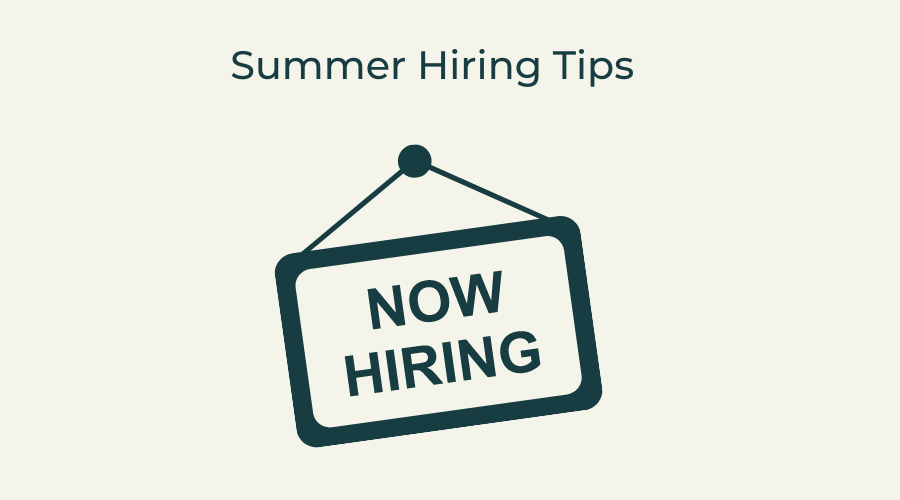
Recruiting Trends
Summer Hiring Tips
As the summer season begins, businesses across the country are looking to staff up to support a predicted increase in consumer demand amid one of the most dynamic labor markets in recorded history. A new report from Snagajob highlights some fresh data and insights from thousands of hourly workers and employers as well as practical hiring advice for businesses staffing up for summer. “Despite the fact that 80% of workers plan to look for a new job this year, companies across every industry are reporting they’re struggling to find candidates,” said Mathieu Stevenson, CEO of Snagajob. “One of the great revelations of the pandemic was just how fungible hourly workers’ skill sets were. It’s not that the hourly workers have left the workforce, it’s that they are reshuffling: looking for more equitable work, greater flexibility and better opportunity for advancement.” Summer Hiring Stats Key findings from the survey of over 3,000 hourly workers and employers highlight who is searching for jobs this summer and how employers are faring: 87% of teens are now looking for work 51% of hourly workers reported that they’re willing to change industries 60% of Gen-Z job seekers consider “sharing social values” among their top 3 factors for choosing a company 45% of hourly workers expect improved working conditions/health standards at a new job Over 93% of businesses report that they’re now understaffed 70% of businesses successfully filling roles are open to flexible work schedules Summer Hiring Tips In addition to the key findings, Snagajob’s Summer Hiring Report features tips for businesses on how to hire today’s hourly workers: Build up programs to attract and retain talent – Many employers find that higher wages alone aren’t enough to bring workers back. Emphasizing company culture through opportunities for workers to grow within the company, socialize with their coworkers, or support causes they stand behind are all approaches to attracting and retaining talent. Take advantage of soft-skilled candidates – Expanding who you consider for open positions is paramount to success in the post-COVID world of work. In addition to considering non-traditional workers such as teens and other first-time hires, look for workers who may not have the exact skill set you’re looking for but can still grow into the position. Broaden your offering criteria – Offering better pay is just the beginning. Workers today are going to be enticed by a full range of offerings, from flexibility and health insurance to growth opportunities, tuition reimbursement, child care assistance, paid time off, company discounts, and more. Acknowledge employee contribution – Employees are part of a team with a shared purpose. People want to belong to a workplace community, be part of something bigger than themselves, and enjoy the day-to-day. Keep work interesting with energy, humor, and fresh incentives — purpose, camaraderie, and levity. Hold job fairs – provide incentives for potential seekers to attend such as free food, gift cards, etc.. You may even need to have “open office” hiring hours on a weekly basis. Summer hiring is challenging but these tips should give you some takeaway tactics to us to your advantage. To access the full report, click here.
Continue reading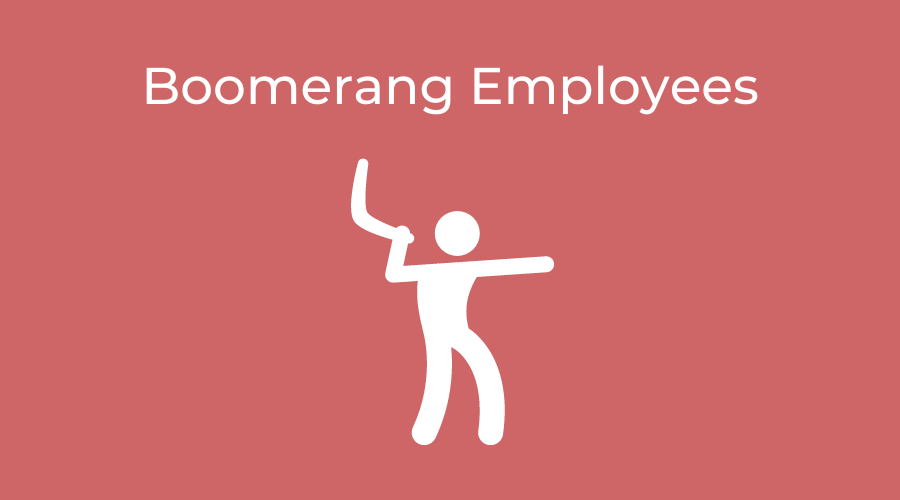
Recruiting Trends
Boomerang Employees
Several years ago, while attending a work function for an employee resource group I was a member of, a speaker mentioned that you must sometimes leave your employer to see a significant pay increase and then come back. While it may seem shocking for some, more and more employers are seeing boomerang employees or returning employees. Why do employees leave in the first place? Employees leave for different reasons – whether they’re trying to escape a toxic environment, or a job opportunity was offered to them, and it was too good to ignore – they leave because the grass appears greener on the other side. The Conference Board reported that 2022 salary increase budgets were estimated to be 3.9%, the highest it’s been since 2008. Historically those budgets are never higher than 3%. Moreover, internal promotions often come with a cap, so it’s extremely difficult to receive a promotion with a significant increase. On the other hand, external hires receive 18-20% more than internal candidates. While employers do realize it’s cheaper to keep employees, the power is no longer in their hands. Not only is it a candidate’s market, but candidates are also refusing to compromise in certain areas. Where companies are forcing employees to return to the office, candidates are looking for remote first or remote only companies. Entire industries are facing candidate shortages – like the fast-food industry – because of low wages. In response, some employers are adapting to the times by offering remote work or increasing minimum wages. Simply put, the great resignation is opening the doors for boomerang employees. Should you hire a boomerang employee? Yes! Boomerang employees are like internal employees, as they’re familiar with the culture of the organization and are proficient in the technology the organization uses. Where onboarding someone completely unfamiliar with the ins and outs of the organization means you must teach them the nuances of the role and organization, you do not have to do this with boomerang employees. Also, if a boomerang employee left because of a lack of upward mobility, between the great resignation and retirement, roles may be more available today than they were previously. Boomerang employees are also familiar with their coworkers, as they’ve more than likely worked with them before. This eliminates the need to build rapport and ensures that already tight deadlines can be achieved without typical new group development dynamics – forming, storming, norming, and performing. Depending on how long the boomerang employee worked with you before they left, they may be able to address any brain drains that were exacerbated because of them leaving. What are the downfalls of hiring a boomerang employee? Businesses suffer great losses when a high potential employee leaves. A high potential may have been in a succession plan and was being groomed to take on future leadership positions or they may have been so invaluable they were doing the work of multiple employees. Backfilling their position was not easy. However, when they return, they bring back their potential with the bonus of having acquired new skills since previously being employed. But what happens when it isn’t a high potential that’s returning? When a problematic or less than stellar employee returns, their issues may return with them. While you can circumvent this by marking the employee as ineligible for rehire, if the hire’s performance wasn’t addressed when they were originally employed, they could dispute those findings and win. So how do you ensure the “right” boomerang employee was hired? To start, look at your current performance management policies and fill any gaps in the process. You cannot fix what was never addressed. You also cannot improve what you fail to acknowledge. Once that’s solidified then review your job descriptions and hiring process to ensure you’re objectively ending with the best candidate for each opening. Another tactic to create a welcoming environment for boomerang employees is to create a talent community, especially for them. Some companies have done this with retired employees or interested external candidates. To provide a community for potential boomerang employees means you continue to nurture them as passive candidates and then whenever a job opportunity of interest becomes available, they’re more likely to apply. Lastly, you could continue to nurture potential boomerang employees by connecting with them in professional communities, like LinkedIn, and periodically checking in with them. Either way, in today’s current landscape it’s more and more common to see a boomerang employee or two. Welcome them as you would any external candidate and nurture them like you intend to retain them for the long-term. Timara Nichols has 15+ years of experience, specializing in human resources, operations, and customer success. She holds the following certifications – aPHR, Certified ScrumMaster, and Meta Certified Community Manager. She’s passionate about talent and people operations.
Continue reading
agile
Agile Recruiting On a Budget
Agile work processes may be best known because of their association with computer software development, where changing requirements, speed of development and uncertainty are the norm. These same principles can also be applied to recruiting. In a business world where change is constant, recruiters need to adapt quickly. In the new world of work where job seekers, let alone top candidates, are in short supply, agile recruiting means accelerating the hiring process. Rather than a dance that begins when a hiring manager turns in a request and ends weeks (sometimes months) later with an offer, agile requiring is a sprint. Instead of gathering resumes, screening the candidates and finally forwarding the best fits only to have to start the process over when the hiring manager rejects them, an agile process begins forwarding the best resumes as they come in. “The beauty of agile recruiting is not having to wait until the very end of the process to get feedback. So presenting candidate profiles / resumes to hiring managers and getting their feedback is done more often,” explains Luwam Samuel who blogs at HR Talent IQ, Agile recruiting methods are effective for every organization, but for smaller teams and those working with tight budgets adopting agile techniques will fill jobs faster and less expensively. Smaller organizations will need to modify some of the steps an organization with greater resources will follow in developing an agile process. Still, the fundamentals of agile recruiting are the same: Make tasks management; set schedules Divide projects in small pieces by assigning priorities to the tasks. Agile recruiting calls these “sprints.” Harver, a provider of volume hiring solutions, says, “By breaking projects into tasks and sprints, you can determine which parts of a recruitment project can be allocated to specific team members. The same goes for setting timeframes for each of these projects and tasks. “This enables you to better assess which tasks to prioritize and which take the longest.” There’s a sample sprint plan on the Harver site. Leverage your resources You can often find great candidates just by asking. Before spending to post jobs, ask the hiring manager and the relevant employee teams for the names of potential candidates. At a small organization the personal touch is often most effective. So connect with these teams in person. Don’t ignore the candidates in your pipeline. These are the candidates who have an interest in the company. Some may have been runners up for the very job you’re now trying to fill. So before spending on pricey job postings, check the ATS. Because they’re targeted, specialty websites – the niche job boards – can be highly effective and less expensive. Get feedback and communicate Earlier we said getting feedback from the hiring manager is a key part of agile recruiting. Once you begin to identify potential candidates, have the hiring manager give you a read on how good a match they are. This needs to happen early in the recruiting process, so time isn’t wasted and your recruiting effort is more productive. It may take some prodding and training, especially for managers unfamiliar with the idea of agile recruiting. But, once they discover how much more quickly they get the people they need, they’ll be sold. As you implement agile recruiting says Samuel, “You will see a difference not just in your relationship with hiring managers and your delivery, but also in the way your own recruitment team works together.” However you choose to modify the basic agility recruiting principles for your needs, the essential ingredients remain the same – speed, feedback and adaptability.
Continue reading
Recruiting Trends
Remote Hiring Is Replacing the In-Person Interview
Until Covid, remote hiring was about as common as remote workers. That’s not to say it was rare, but it was far from mainstream. Startups and companies with virtual workers would hire remotely, but most other companies still insisted on in-person interviews. Covid changed all that. When businesses were forced to go all virtual, so did their hiring. A survey in April of 2020, a month after the nationwide shutdown of all but essential businesses, found 43% of hiring managers had reduced in-person interviews; 25% had eliminated them entirely. They had to hire remotely, turned to telephone and video for interviews and increasing their use of assessments and reference checks. So soon after the shutdown it was impossible to tell what effect remote hiring would eventually have. But there were some hints. Though 41% of managers said hiring had become slower, 38% said it was faster; 21% said it was much faster. The survey found the latter group used significantly more remote hiring methods than those whose turnaround times were slower or unchanged. There was one other telling point in that early survey: there was a 50/50 split between hiring managers who wanted to return to how hiring was done before Covid and those who wanted to continue to hire remotely. Remote Hiring More Efficient Months later, a new survey bore out what the earlier survey hinted at: remote hiring made the process less challenging and more efficient. “Across the board, hiring professionals find that the work of talent acquisition and talent management is less challenging than it was [in 2019],” said the report, The State of Hiring in a Year of Crisis. As recruiters and hiring managers have discovered, remote hiring has definite advantages over the traditional, in-person process. A survey conducted just a few months ago found 93% of employers plan to continue using virtual interviews in the future. By large margins, the 1,100 talent acquisition professionals across a broad range of industries and business sizes, said remote hiring was speedier (74%) and easier to manage the process from start to finish (79%). Over three-quarters believe virtual hiring has improved the candidate experience. Candidates, too, find remote hiring less intimidating (37%); 45% appreciate not having to travel for the interview and the same percentage like that they can interview from anywhere. No surprise then that Peg Buchenroth, a SVP with the staffing and recruitment firm Addison Group, says, “Virtual interviews are not going away.” “Virtual interviewing will remain an option for talent acquisition, she told the Society for Human Resource Management, But as the SHRM article notes, remote hiring has limitations. Limits of Remote Hiring “In-person interviews offer a higher level of engagement. You can read body language better and get a better sense of someone’s interpersonal skills,” Buchenroth pointed out. “For roles that require strong social skills, such as client-facing or senior leadership positions, employers may want to meet candidates face-to-face.” For that reason, talent acquisition professionals expect companies to adopt a hybrid hiring process. Jobs requiring in-person interaction, such as in retail or hospitality or that demand close collaboration among an on-site team will still have a fact-to-face component. Remote hiring tools including phone screens, video interviews, assessments and, when relevant, skills testing may be used to narrow the applicant pool, but the final step will be an in-person interview. Entirely remote hiring will be reserved for jobs to be performed remotely. And this is a category of work that is expanding rapidly. Better than 4-in-10 workers could potentially do their job remotely, says the World Economic Forum which predicts a “significant expansion of remote work.” The issue for companies is no longer whether to include remote hiring as part of their talent acquisition process, but how and specifically what tools to use, says Eric Friedman, chairman and CEO of a skills assessment provider writing. “The challenge is selecting and consolidating the right tools to deliver a sustainable and effective remote talent acquisition model.” Contribution by John Zappe
Continue reading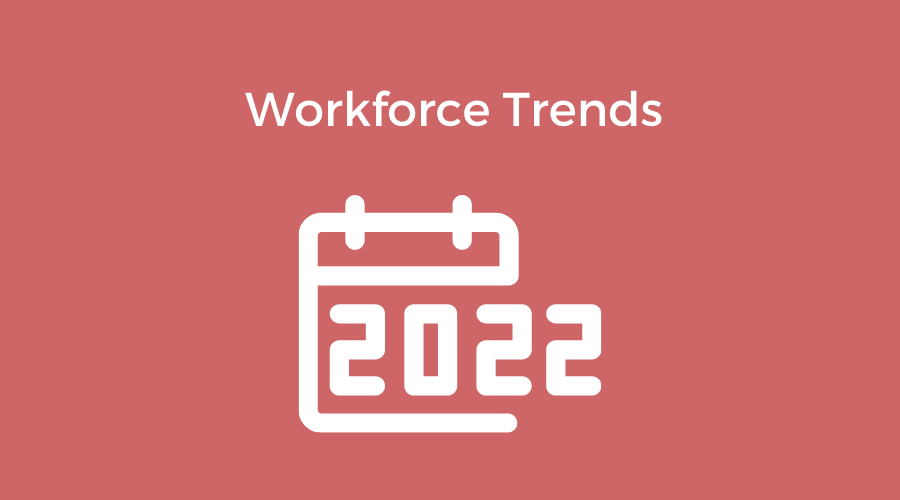
Recruiting Trends
Workforce Trends for 2022
To say the nature of work is changing is the understatement of the year. Who could have predicted the way the workforce is trending these days with remote work, vaccination mandates and a host of other changes affecting the American worker. According to ADP, the HR payroll company, the transformation of the global workforce accelerated in 2021, driven by the continued impact of the pandemic and strains on businesses amid record labor shortages and shifting worker priorities. It’s a strain felt worldwide. ADP Research Institute found that 64% of the global workforce was negatively impacted by COVID-19, including 28% who lost a job, were furloughed, or were temporarily laid off, and 23% who took a pay cut. These labor market shifts have led workers to reprioritize their needs, further redefining how and where work gets done. As a result, employers face added pressure to adjust to emerging talent demands. To help businesses navigate forward, ADP shares the biggest drivers behind work’s evolution in 2022. “The world of work has been in a constant state of motion,” said Don Weinstein, corporate vice president of global product and technology at ADP. “The needs of the global workforce are evolving in tandem with technology, and the result is transformational. Amid all the change, one common thread has only grown stronger: people power performance. To support and empower their people, employers are rooting their decision-making in data and leveraging those insights to better understand their employees’ needs and what drives their productivity. This increased visibility is fostering a stronger sense of connection and paving the way for greater growth and innovation ahead.” 4 Trends for the 2022 Workforce The Dispersed/Hybrid Workforce As employers explore on-site, fully remote and hybrid workplace models, they will look for new opportunities to increase employee visibility and better understand the needs of a dispersed workforce. According to ADP Research Institute’s “People at Work: A Global Workforce View” study, within a year, COVID-19 has significantly impacted workers’ locations. In fact, three quarters (75%) of the global workforce made changes or plan to change how or where they live, with that percentage even greater (85%) among Generation Z. Additionally, ADP surveyed small and midsized U.S. employers and found 66 percent have a hybrid work model in place. To foster connection in the absence of physical proximity, people data will shed insight into the ebbs and flows of engagement and performance, helping managers pull the right levers to support a high-performing remote or hybrid team. This new dynamic built on mutual trust will help drive employee engagement and performance. ADP Research Institute found that U.S. employees who have trust in both their teammates and their team leader are seven times more likely to feel Strongly Connected to their organization. Mission Driven Workplace Culture As employers look for ways to drive inclusion amidst new work models, connection will become a measurement of workforce culture. ADP Research Institute found that U.S. workers who feel they are Strongly Connected to their employer are 75 times more likely to be Fully Engaged than those who do not feel connected. With connection driving engagement, employers will need to heighten their focus on their people and reflect on the larger purpose that unites their workforce. Workforce flexibility will stretch beyond perceived limits and employers will embrace people-centered initiatives to build a workplace where everyone can thrive. Diversity, equity, and inclusion strategies will additionally evolve to drive true, measurable progress. ADP data shows more than 50 percent of companies that leveraged ADP DataCloud’s DEI analytics capabilities have taken action and realized positive impact on their DEI measures. Better Data Will Power Decision Makers With employees remaining remote and hybrid, operational and compliance considerations will grow, adding to an already complex regulatory environment. In fact, ADP’s HR Survey Series with HR Outsourcing found nearly 20 percent of U.S. companies with 25 to 99 employees admit they are currently facing challenges with compliance and regulatory issues, which may increase as regulations change. To navigate forward, leaders will rely more heavily on real-time data to tackle compliance proactively and guide decision-making. Quality data will be key in providing businesses with the confidence they need to act. As an example, to better manage return to the workplace policies including vaccination tracking and testing, employers are turning to timely people data. Through its ADP Return to Workplace mobile solution, ADP reports workers have completed more than three million health status surveys since the tool’s launch. Digitization Will Change the Employee Experience As business models evolve amid global shifts, businesses will turn to technology to drive efficiency and expand capabilities by eliminating task work and refocusing efforts on strategic growth initiatives. According to ADP data, monthly users of its ADP Mobile Solutions app increased over 25% from last year as workers leverage self-service tools, helping to remove administrative tasks from HR practitioners’ plates, enabling them to focus more on their people. This digitalization will benefit both employers and employees, as employees seek greater flexibility and control in their employee experience. ADP believes also that a surge in skills-based hiring will drive innovation further. Their research institute’s “People at Work: A Global Workforce View” study found more than one-in-four workers (28%) report having taken on a new role or changing role due to pandemic labor market shifts. The number increases to 36% for Generation Z workers. Following a period during which employees were forced to reskill, people will continue to prioritize their skills and pursue opportunities to apply their unique strengths. To accelerate performance, employers will need to focus on those individual strengths and provide opportunities for employees to develop new skills or embark on a new career trajectory with more opportunity for growth. Additionally, employers will also rely on helpful technologies like machine learning to identify workers with the right skills in unique places, such as pools of former applicants who previously applied for other roles.
Continue reading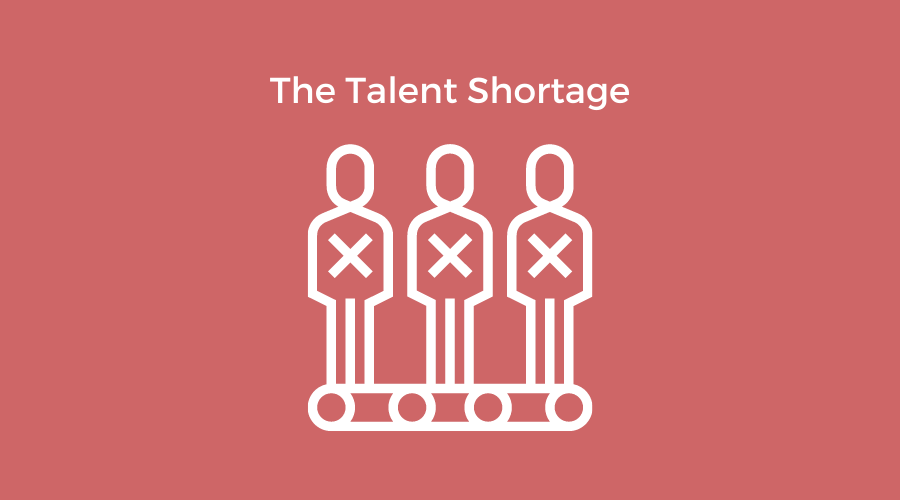
Recruiting Trends
The Talent Shortage (and what to do about it)
The talent shortage currently faced by most employers is at a 15 year high according to one report recently published by the Manpower Group. A quick summary of that report shows the difficulty of filling jobs today; “Hiring optimism has returned to levels not seen since the start of the pandemic yet that optimism is being tempered by the highest levels of global talent shortages in 15 years with 69% of employers reporting difficulty filling vacancies. European employers are reporting the most difficulty filling open roles with the biggest impacts being felt in France, Romania, and Italy. In the U.S. employers report their most optimistic hiring intentions in more than 20 years, driven by Hospitality & Leisure as states open up.” And the shortage of talent appears to be here to stay. Korn Ferry says that by 2030, there will be a global human talent shortage of more than 85 million people. It’s happening in part due to demographics. There simply isn’t enough new talent to replace the retiring ones. In this country, the majority of baby boomers will have moved out of the workforce by 2030, but people are having less kids which leads to smaller pool of talent. 69% of Employers Can’t Find Enough Talent The talent shortage, which is generally defined as the disparity between an employer’s hiring needs and what available skills candidates have to offer—has a variety of causes. The global pandemic has become the biggest cause of course, which only exasperated an already tight labor market before it hit. In 2019 Manpower said 59% of employers could not fill jobs fast enough and that number has increased to 69% in 2021. A significant rise in just two years. Throw in the fact that many office workers want to be remote, at least some of the time, companies are struggling to figure out the right mix. In that same report 8 in 10 workers say they want a better work-life balance. Remote work is the best way they see that happening. When LinkedIn proposed more in office hours employees pushed back. They quickly changed their minds over worries of turnover and now allow workers to work exclusively from home. Flexible working arrangements appear to be the most coveted of all employee benefits. But let’s take a look at what else you can do to address the problem. How to Combat a Talent Shortage Boost your brand and make culture more visible. In times like this employers need to rise up above the other employers. You are all hiring so the companies that can create messaging and stories that resonate with active and passive candidates will get more applicants. Give candidates a reason to come work for you and shout it from the rooftops. Use social media, your career site and your job postings to create a unique message that candidates will want to engage with. Don’t be afraid to get creative with your job marketing efforts. Sometimes those experiments can pay off if you think outside the box. Be proactive – start sourcing. Employers need to employ proactive strategies such as sourcing candidates on a regular basis to keep the hiring pipeline full. A number of online services can help you do this such as Visage.jobs or Recruiter.com. Or you can simply go the traditional route and hire recruiters or staffing firms to do the sourcing for you. It’s a time intensive strategy but it works if you make the effort. Empower Internal Mobility. Leverage your employees to fill talent internally. Talent mobility is a big trend in the enterprise world and we are seeing the major software vendors like Workday and others beef up their internal mobility solutions. Providing employees with a career ladder not only keeps them learning but improves retention rates and even acts as a recruiting tool. By showing potential candidates how they can learn and advance in your organization, employers can attract more talent. Make it a point to have your employees skills in some kind of internal database. Maintain a viable employee referral program. Use your employees to spread your hiring message. This is probably the fastest way to increase applicants. By leveraging the social networks of your employees you greatly amplify your recruiting efforts in a way that costs you nearly nothing. Some employers even gasify this strategy by offering rewards and prizes to the employees that do the most sharing. So start creating content and links that your team can easily share and if you need to get some software to help manage it look into some employee advocacy vendors to help you launch that. Automate you’re hiring process. When you ask applicants it’s clear that employer communication is lagging. In a recent survey 46.8% of employers said that “unresponsive candidates” (not hearing back from applicants after reaching out) is a top online recruiting pain point. On the other hand, 48.8% of job seekers said the same about employers – they are frustrated with applying for jobs and receiving no response. Moving forward, both parties will need to commit to communicating with one another and say “no” to ghosting if they want to find the right hires and the right opportunities. Employers need to automate all standard communications and incorporate things like text messaging and interview scheduling to automate as much of the process as they can. Today’s candidates want easier ways to interact with you so take those pain points off the table and automate them. If anything, the global pandemic has taught us that now is the time to re-think how we attract talent. The workers of today want flexible, trusting work environments that help them blend work and home. The skills shortage may continue but those employers who embrace change in talent acquisition will find themselves ahead in the race for talent.
Continue readingAbout Emissary
Emissary is a candidate engagement platform built to empower recruiters with efficient, modern communication tools that work in harmony with other recruiting solutions.
Stay in the loop!
Subscribe to our bi-weekly newsletter and keep up to date with the latest Recruiting and HR tips and trends.
By clicking send you’ll receive occasional emails from us.
